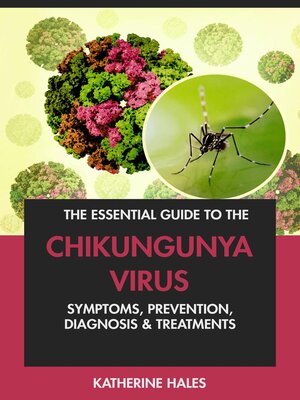The Essential Guide to the Chikungunya Virus
ebook ∣ Symptoms, Prevention, Diagnosis & Treatments.
By Katherine Hales

Sign up to save your library
With an OverDrive account, you can save your favorite libraries for at-a-glance information about availability. Find out more about OverDrive accounts.
Find this title in Libby, the library reading app by OverDrive.



Search for a digital library with this title
Title found at these libraries:
| Library Name | Distance |
|---|---|
| Loading... |
Illness has a way of drawing a thread through human history, stitching moments of fear, resilience, and discovery into the vast fabric of our collective story. Some diseases come with a familiar face, striking again and again, recognized by all. Others remain in the shadows until they emerge unexpectedly, traveling silently across borders, catching populations unprepared. The Chikungunya virus is one such intruder - a microscopic traveler that has crossed oceans and continents, leaving behind not only physical pain but also social and economic upheaval.
The writing of this work grew out of a simple yet pressing reality: there is still so much misunderstanding surrounding Chikungunya, its spread, its symptoms, and its broader impact on the lives it touches. Many people have heard of it in passing, often through news headlines during outbreaks in tropical or subtropical regions, but few understand what it really means to live in a place where the virus has taken hold. Even fewer know its deep roots in scientific history or the complexities involved in treating, preventing, and ultimately controlling it.
This is not merely an academic subject. The Chikungunya virus affects mothers, fathers, children, the elderly, and the young, cutting across the boundaries of age and circumstance. It disrupts work, education, travel, and the ordinary flow of community life. Those who suffer from it may carry its effects long after the initial fever fades, enduring lingering joint pain that changes their daily routines for months, sometimes years. In some places, it has been mistaken for other diseases such as dengue or Zika, leading to confusion and, in some cases, delayed care.
The purpose of what follows is to bring clarity and depth to the conversation. By exploring its history, transmission, clinical features, pathophysiology, and more, the aim is to weave a picture that is both scientific and human. Each chapter offers a closer look at a different piece of the puzzle, from how the virus moves between people, to the methods doctors use to diagnose it, to the steps communities can take to protect themselves. In doing so, we acknowledge not only the biological realities but also the societal ripples that follow each outbreak.
Writing about a virus like Chikungunya is not about stirring fear. It is about empowering understanding. The more we know, the better equipped we are to prevent, manage, and ultimately reduce the burden of disease. Science does not exist in a vacuum - it is most powerful when it informs daily life, guiding the choices individuals, families, and policymakers make in the face of emerging threats.
The following pages are meant to be read not just as a scientific text, but as a bridge between the lab and the lived experience. It is my hope that you will come away not only with facts and figures but also with a sense of the very real human story that accompanies them. Because the Chikungunya virus is not just a topic for researchers - it is a challenge for us all, and knowledge is our most enduring tool in meeting it.







